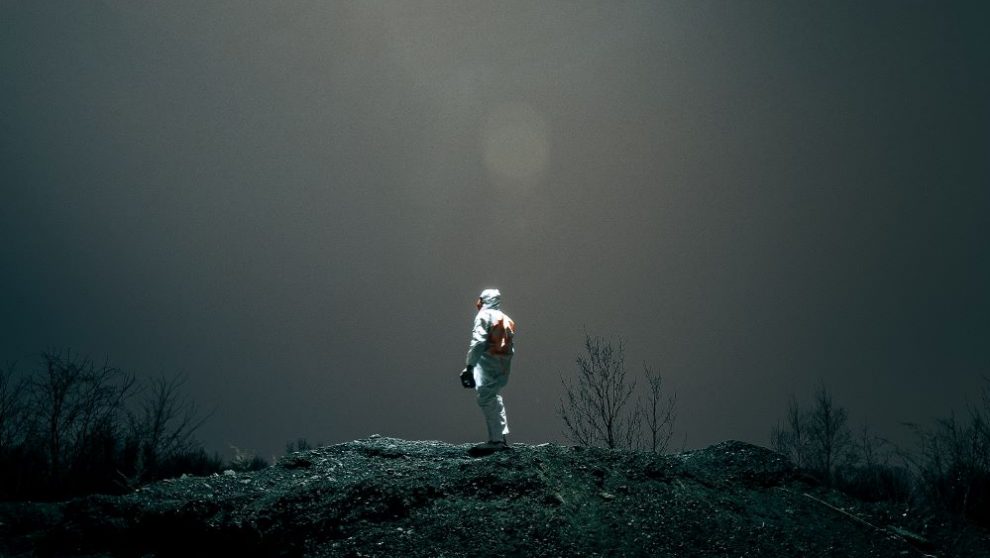At St. Joseph Parish in Seattle, the changes started small. In the
early weeks of COVID-19’s quick spread around the country, the parish
“tried to be proactive,” says Jesuit Father John Whitney, St. Joseph’s
pastor.
“Before we received directives, we had already moved to make some accommodations in terms of not holding hands and trying to keep people at a distance to receive communion safely,” Father Whitney says. “As the crisis began to develop and we started to see how serious it was, we kept making adaptations to try to stay in front of the virus and care for our population, to try to keep them informed. A lack of information builds fear.”
The biggest change came on March 11, when the Archdiocese of Seattle became the first diocese in the country to suspend all public Masses due to the coronavirus pandemic. At that point, 375 people in the state of Washington had been diagnosed with the virus, and at least 31 people had died.
At St. Joseph, Father Whitney says, the response to the news was a series of swift changes. In a matter of days the parish launched a YouTube channel for livestreamed Masses, and all parish meetings were moved online. Although the nave of the church remained open, sacraments such as confession and anointing of the sick became appointment-only, with special accommodations to ensure social distancing. Classes such as those for catechumens preparing to enter the Catholic Church were changed to a distance-learning format.
“We’re trying to figure out how we can continue to serve our community and make people feel not isolated and alone,” Father Whitney says. “We’re trying to use whatever we have to reach out to people to let them know they can call us if they need to talk to someone or pray with someone, while at the same time trying not to become infected ourselves.”
Across the United States, more and more parishes are working to find a balance between supporting their parishioners through a difficult time and maintaining the necessary social distance to avoid spreading the novel coronavirus. Faced with the continued increase in confirmed cases of COVID-19 across the country, every diocese and archdiocese in the United States has suspended the public celebration of Masses for the foreseeable future.
In the Archdiocese of Washington, parishes are being encouraged to take creative steps to continue ministering to the community whenever possible, says Jonathan Lewis, assistant secretary for pastoral ministry in the archdiocese’s Secretariat for Pastoral Ministry and Social Concerns. To help with these efforts, the archdiocese has compiled several resources for the faithful, including a guide to pastoral ministry during COVID-19 and step-by-step instructions for families and roommates on holding in-home prayer services.
“We’re encouraging parishes to think creatively and to have a pastoral ministry plan and to share those best practices with others,” Lewis says. One idea he’s seen comes from Father Scott Holmer of St. Edward the Confessor Catholic Church in Bowie, Maryland, who set up a drive-thru confessional in the parish parking lot.
“That’s one of the creative suggestions we’ve passed on to others, and we’ve seen more priests take up that practice, providing sacraments outside where there’s less of an opportunity for buildings and churches to be contaminated,” Lewis says.
One thing that Lewis hopes parishes will learn from the pandemic is the importance of regular and consistent communication with parishioners.
“This really highlights the importance of parishes having access to the right kinds of technology as well as updated parishioner information, including email addresses,” Lewis says. “You can’t reach out to people you don’t know.”
Lewis thinks the crisis is a new challenge for parishes to break out of established patterns and begin serving with a new “missionary mindset.”
“We have to practice inculturating the gospel into the lived experiences of our parishioners in their everyday life,” Lewis says. It’s also an opportunity to move “from maintenance to mission,” eliminating physical distractions so that parishes can focus more on meeting individual spiritual needs.
“When we can’t spend time on the buildings we maintain, that can focus us in a positive way on being a church on a mission,” Lewis says. “I hope this time of crisis brings out the best in Christians in our country, both in their personal and family lives of prayer and in their stewardship and charity for those in need.”
Living the faith on a local level
Although there are many livestreamed Masses taking place all over the world, Lewis believes it’s valuable for Catholics to be able to connect with their home parishes as much as possible.
“The practice of
religion, like politics, is always local,” Lewis says. “People have a
special affection and love for their local parishes as the presence of
the church in their community, and that’s a beautiful thing. As so many
people feel isolated or lonely or deal with mental health challenges,
each of us has a place in our local parish. The challenge today is how
we as parish leaders can go out creatively to find the lost sheep in a
time of social distancing.”
Loreena Garcia is the communications and development coordinator for St. Monica Catholic Community in Santa Monica, California. There, every parish activity and resource possible has transitioned to a livestream or digital outlet, including the parish’s mission retreat, faith-sharing groups, and a series of classes focused on answering faith questions. In addition, the pastoral care ministry team has organized phone trees to connect with the parish’s elderly community to ensure that they can access the resources they might need.
“There are many Catholics out there who are unfamiliar with the digital opportunities that are available to us every day. We can connect virtually in so many ways that it doesn’t have to be scary,” Garcia says. “We can make our spiritual communions from home and study our faith in new and exciting ways. God gave us the gift of technology, and there are so many ways in which this new tool can help to shape our lives and routines for the greater glory of God.”
Garcia believes these updates to the parish offerings are an important way the parish can “maintain a sense of continuity and connectedness during these uncertain times.” Although St. Monica’s cannot currently offer the Eucharist, Garcia believes the parish can still work to fulfill its mission to “form loving disciples who will transform the world.”
“Our parishioners come to us to feel a sense of community, and we are going to continue to provide them with opportunities to encounter Christ in each other and through their mutual love for God,” Garcia says.
The continued need for a parish community has also been strongly felt at Parish of the Holy Spirit in Grand Rapids, Michigan, where pastor Father Mark Peacock has been posting daily homilies to the parish’s social media pages and blog. Inspired by a parish in Milan, Italy, Father Peacock asked members of the community to submit photos of themselves to hang within the church sanctuary. Within just over a week, he received more than 500 photos.
“The response has been tremendous,” Father Peacock wrote in a blog post. “As much as I have desired to see the faces of the parish family, the parish family has desired to have their faces seen by me. Many people have written prayer requests with their pictures and stories of what they are going through at this time. It has all been heartfelt and moving because, in this time of social distancing, we all want to be seen, loved, and to stay somehow connected.”
‘Sometimes Lent finds you’
Father Peacock says he is trying to remind his parishioners that in this season of Lent, Catholics are still being called to prayer, fasting, and almsgiving. While fasting from the Eucharist is a challenge many Catholics never could have anticipated, “it’s sort of a blessing that this is happening during Lent, because it has challenged us in a whole new way,” he says.
“We all hunger for Christ in our life. We all hunger for holiness and faithfulness, and now we’re being challenged to do that in different ways,” Father Peacock says. “We need to pray better now than we ever have, because we need to pray for our government and those in leadership within the church.”
Father Whitney also believes the quarantine experience has made Lent into a very tangible thing for Catholics. Never before has his parish community at St. Joseph been so focused on caring for members of its immediate community.
“As one of our priests said in a recent homily, ‘Sometimes you find Lent. And sometimes Lent finds you,’ ” Father Whitney says. “In some ways, this entire experience has been very Lenten in terms of making sacrifices, even fasting from the Eucharist, so that others can be safe.”
Although the absence of the Eucharist is “a real loss for many of us,” Father Whitney says he is encouraged by the number of people who are searching online for past homilies and resources. He hopes his team can continue to create content to give people hope and a sense of community in the weeks to come.
“There’s a real sense that we’re all walking through this together,” Father Whitney says. “There’s a lot of fear and a lot of worry, but I think people look to the church for a sense of confidence and hope. And that’s all we can bring them.
“We are not a people of fear because we know Christ is with us, even in these moments of challenge. We will hold onto each other in thoughts and prayers from a distance precisely because of our love for each other.”
Image: Unsplash cc via Martin Sanchez














Add comment